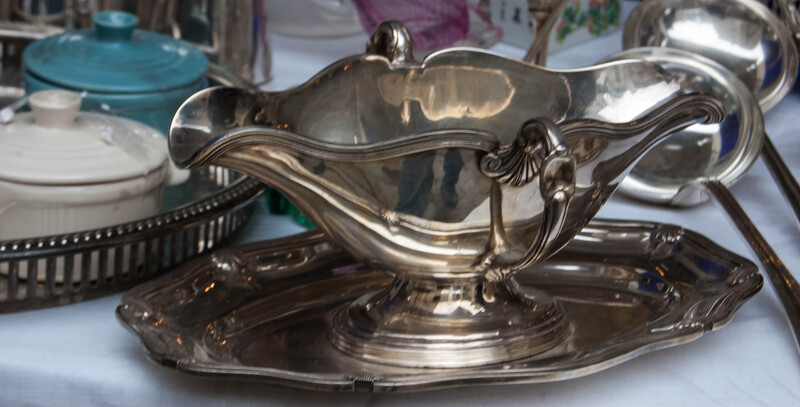Best Practices for Recycling Metal Cookware: A Comprehensive Guide
Are you wondering what to do with your old, worn-out pots, pans, and other metal kitchenware? Recycling metal cookware is not just environmentally responsible--it helps reduce landfill waste, conserve natural resources, and can even benefit your community. In this detailed guide, you'll find all the tips, steps, and essential facts you need to recycle metal cookware efficiently and sustainably.

Why Recycle Metal Cookware?
Millions of metal pots, pans, and utensils end up in landfills each year. Metal cookware is made from valuable materials such as aluminum, stainless steel, copper, and cast iron. Recycling these items gives metals a second life and drastically reduces the environmental impact associated with mining and manufacturing new products. Let's explore the top reasons for recycling metal cookware:
- Reduces resource extraction: Recycling lessens the need to mine and process raw metal ores, preserving natural resources.
- Conserves energy: Processing recycled metal uses far less energy than producing new metals from scratch.
- Lowers carbon emissions: Recycling helps minimize air pollution and the carbon footprint created during the manufacture of new metal goods.
- Decreases landfill waste: Metal cookware that's discarded among municipal waste does not decompose, contributing to piled-up landfills for hundreds of years.
Common Types of Recyclable Metal Cookware
- Aluminum pans (including nonstick and anodized)
- Stainless steel pots and pans
- Copper cookware
- Cast iron skillets
- Bakeware: Muffin tins, cookie sheets, and roasting pans
Important: Not all kitchen items are eligible for recycling in your curbside bin. Read on to learn about the ideal way to identify and recycle your cookware responsibly.
Step-by-Step Guide to Recycling Metal Cookware
1. Identify the Type of Metal
Efficient recycling of kitchen cookware depends on what metals your items are made from. The main types are:
- Aluminum: Lightweight, doesn't rust. Often used for nonstick pans and baking sheets.
- Stainless steel: Durable, shiny, and rust-resistant. Used for most high-quality pots and pans.
- Copper: Reddish-brown, conducts heat well. Found in premium cookware.
- Cast iron: Heavy, blackened metal. Frequently used in skillets and Dutch ovens.
Check the bottom of your cookware for stamps or labels to determine the metal type. Correct identification is necessary because some recycling centers handle certain metals differently.
2. Remove Non-Metal Parts
Before recycling, disassemble removable parts that aren't made of metal. Common non-metal components include:
- Plastic or wooden handles
- Glass lids
- Silicone grip covers
Tip: Use a screwdriver or pliers to carefully detach handles or knobs. If you can't remove certain attachments, ask your local recycling center if they will accept the cookware as-is.
3. Clean Thoroughly
Recycling facilities prefer items that are free from excessive grease, food residue, or burnt-on carbon. Wash your old pots and pans well, removing stubborn debris with hot water, baking soda, or even a vinegar soak. Pristine items are easier to process and more likely to be accepted at your chosen recycling drop-off.
4. Research Local Recycling Programs
- Check curbside recycling rules: Most municipal programs do not accept large metal items like pots and pans in household bins because they can damage sorting equipment.
- Locate scrap metal facilities: Many towns offer a facility specifically for scrap metals, which is ideal for metal cookware disposal.
- Ask about hazardous coatings: Some nonstick pans use chemicals like PTFE or Teflon, which may require special disposal. Confirm with your recycling center how to handle these items.
Search for recycling programs using online tools such as Earth911, your city's official waste management page, or by calling your local recycling hotline.
5. Drop Off or Arrange Pickup
Once you've located the right facility, securely transport your cleaned, separated cookware. Some scrap metal recyclers even offer residential pickup for bulk or heavy items!
Alternative Ways to Repurpose or Donate Used Cookware
Recycling pots and pans isn't the only eco-friendly solution. If your cookware is in usable condition, consider one of these alternatives:
- Donate to local charities or shelters: Many kitchens are in need of serviceable pans or utensils.
- Offer on online marketplaces: Use websites like Freecycle, Craigslist, or Facebook Marketplace to give away items for free to those in need.
- Upcycle for DIY projects: Creative minds can repurpose old cookware into planters, storage bins, or quirky decorations.
- Give to thrift stores: Secondhand shops often accept gently used metal cookware.
Remember: Donation and repurposing only make sense if the cookware is clean, safe, and free from hazardous coatings.
Challenges of Recycling Metal Cookware
- Non-removable nonstick coatings: Many recyclers consider pans with Teflon or ceramic coatings as contaminants.
- Mixed materials: Cookware with layered metals or bonded non-metals (e.g., glass, silicone) is tricky to process and may require special handling.
- Old or damaged items: Severely rusted or warped pans may have little scrap value, making recycling less enticing for some centers.
Best practice: Always call before you drop off cookware to confirm what your local scrap yard or recycling facility will accept.
Environmental Benefits of Metal Cookware Recycling
Recycling metal cookware yields significant environmental advantages. For every ton of aluminum recycled, up to 14,000 kWh of energy are saved compared to producing new aluminum from ore. Stainless steel is infinitely recyclable, and many manufacturers now use post-consumer scrap to create new products.
- Less mining and pollution: Reduced need to extract and refine raw metals cuts down on water, soil, and air pollution.
- Minimal landfill footprint: Scrap cookware can be melted and reused indefinitely--none of it needs to become waste.
- Circular economy: Keeping household metals in circulation supports green jobs and sustainable manufacturing.
Frequently Asked Questions (FAQs) About Recycling Metal Cookware
Q1: Can I put metal cookware in my regular curbside recycling bin?
No. Most municipalities do not accept large metal items or cookware in curbside bins because they can disrupt recycling machinery. Always check your city's rules and use designated scrap metal drop-off sites instead.
Q2: What should I do with nonstick or coated pans?
Many nonstick pans (such as those coated with Teflon or ceramic) are not accepted by standard scrap yards. Check with your local recycling center for instructions, or consider upcycling or offering to a local art project. If the coating is severely damaged or peeling, it's best to dispose of it as trash if recycling is not available.
Q3: Is there a difference between recycling aluminum and steel cookware?
Yes, aluminum and steel are often separated at recycling centers and processed differently. Sort them if requested, and always remove any non-metal components before dropping off.
Q4: Does recycled cookware get turned into new kitchenware?
Sometimes! While most recycled metal is melted and used for a variety of purposes--such as car parts, construction materials, or even cans for food and beverages--some manufacturers do produce new pots, pans, or bakeware using recycled materials.
Q5: Do donated cookware items need to look like new?
Not necessarily. Clean, working cookware with minor cosmetic wear is often welcomed at shelters, thrift stores, and community organizations.

Quick Tips: Making Metal Cookware Recycling Easy
- Keep a box for scrap metal in your garage or shed, and slowly add worn-out items over time for a single recycling trip.
- Ask neighbors if they have items to include--group recycling is cost-effective and efficient.
- Contact your local waste authority for special metal collection days or events in your community.
Summary: The Smart Way to Recycle Pots, Pans, and Bakeware
Recycling old metal cookware helps conserve resources, reduce pollution, and make the most of valuable metals. By following the best practices above, you can ensure your kitchen clutter gets a new lease on life--all while supporting a cleaner, greener future. Remember to separate metals, remove non-recyclable parts, clean thoroughly, and always check with local facilities before recycling. When reuse is possible, donate or repurpose first to extend the useful life of your kitchen gear.
Do your part--choose responsible cookware recycling today!
